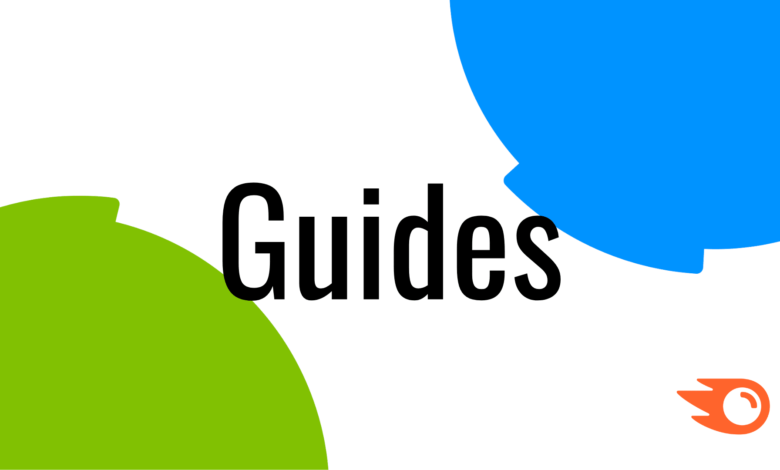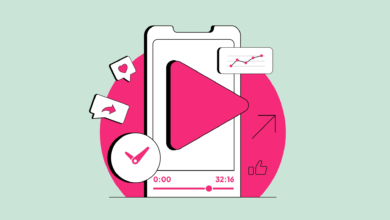The Ultimate Guide to Mastering Social Media Content Creation

To achieve your brand’s social media marketing goals, having a solid plan in place is essential. It involves creating the right content for your target audience and selecting the appropriate channels for distribution.
In this comprehensive article, we will delve into various aspects of social media content creation, from audience research to content formats to crafting engaging copy. Additionally, we will recommend top tools to streamline your social media content creation workflow.
What is content creation in social media?
Social media content creation refers to the process of developing content specifically tailored for social media platforms. This content can take various forms, including:
- Text
- Videos
- Images
- Link posts
- Livestreams
The content creation journey typically begins with understanding your target audience and brainstorming content ideas. It concludes with analyzing the performance of the content you have published.
Whether you are a content creator or manage social media for a brand, investing time in creating high-quality and relevant content is crucial.
Effective social media content can help you achieve the following:
- Enhance brand awareness
- Expand your reach across social media platforms
- Build a community of loyal followers and customers
- Drive traffic to your website
- Generate leads and convert them into customers
8 essential steps for social media content creation
1. Set clear goals
Establishing strong social media marketing goals is crucial as they define what you aim to achieve and why. Clear goals help in determining the type of content to create, streamlining the content creation process, and ensuring you focus on the most critical tasks.
Utilize the SMART framework to set your goals:
- Specific: Clearly define what you want to achieve and why. Provide detailed information.
- Measurable: Determine how you will measure the results. Identify the metrics to be used.
- Actionable: Outline the steps you will take to reach the goal. Prioritize goals with actionable steps.
- Relevant: Ensure the goal aligns with your current responsibilities and objectives. Focus on goals that are pertinent.
- Time-bound: Set a deadline for achieving the goal. Establish a timeline for yourself or your team.
Here’s an example of a SMART social media marketing goal aimed at enhancing brand awareness:
Our team aims to achieve 10,000 YouTube video views by July 31st. To accomplish this, we will create and publish one long-form video per week. Based on previous data, this level of views is expected to result in at least 1,000 new YouTube subscribers, thereby increasing brand awareness as we enter a new market.
Furthermore, a goal focused on driving website traffic might look like this:
We aim to drive 5,000 clicks to the landing page within the first 24 hours of the marketing campaign to meet our quarterly traffic target. To achieve this, we will create and publish a Facebook post, an X post, and an Instagram story linking to the page. Subsequently, we will retarget these visitors to guide potential customers towards making a purchase.
2. Research your audience
Understanding how to connect with your audience is vital for achieving your goals. Conduct thorough research on your followers to gather insights and ideas for social media content creation.
Utilize Semrush’s Social Analytics tool to delve into the demographics of your Facebook, Instagram, and LinkedIn followers. Select the desired social profile or add a new one on the main dashboard.
Take note of key demographic data such as age and gender of your followers. You can also explore location data by switching between the “Countries” and “Cities” tabs.
For deeper insights into your target audience (not just your current followers), leverage Semrush’s One2Target tool under “Trends”. Input up to five of your closest competitors and analyze the age ranges, gender breakdown, household size, income level, education level, and employment status of their audience in the “Socioeconomics” tab.
3. Analyze your competitors
Gaining inspiration for content ideas that resonate with your audience can be achieved by analyzing your competitors. Utilize Semrush’s Social Tracker to monitor their social media campaigns and identify potential opportunities for your brand.
Within the “Comparison With Competitors” panel, you can add multiple brands to compare their audience growth and engagement metrics against yours. Analyze the “Audience,” “Activity,” and “Engagement” tabs to gauge your brand’s performance.
To delve into platform-specific comparisons, select a platform tab and category to compare. For instance, when analyzing Facebook engagement, you can assess your brand’s total engagement and compare it with competitors.
To understand what drives engagement for your competitors, navigate to the “Posts” tab and sort by “Engagement”. By studying their content and identifying trends or themes resonating with the audience, you can gain valuable insights for your own content strategy.
4. Choose content formats
Selecting the appropriate format for your content is crucial and should align with your goals. Consider the following popular social media content formats:
Text posts
Text posts are effective for storytelling, sharing insights, and posing questions. For example, Beehiiv utilized a text post to engage its audience with an open-ended question.
Images
Images are great for showcasing products and lifestyle content. Mokuyobi leverages image posts to highlight its colorful products and drive traffic to its online store.
Videos
Videos are ideal for conveying complex ideas, thought leadership, and engaging and educating viewers. Red Bull often uses video content to showcase extreme sports and evoke a sense of adventure.
Link posts
Link posts are effective for directing traffic to your website. Semrush frequently shares link posts to direct followers to blog posts and other online resources.
Livestreams
Livestreams enable real-time interaction with your audience and are perfect for product demonstrations, panel discussions, and sharing expert insights. Motion regularly hosts LinkedIn Live events to provide valuable tips to its target audience.
5. Identify the right social media platforms
While you can create content for numerous social media networks, focusing on a select few can be more effective for your overall social media strategy. Begin by examining statistics to determine the most suitable platforms for your brand.
The Pew Research Center offers data on the percentage of adults using each social platform based on various factors such as age, gender, and income. For instance, Facebook and YouTube are popular among users aged 50 to 64, while X is favored by college graduates and individuals with advanced degrees.
For a detailed analysis of the right platforms for your audience, utilize Semrush’s One2Target tool. By exploring the number of followers each competitor has on different platforms, you can identify the most suitable platforms for your brand.
Some of the most popular social media platforms include:
With 3.05 billion monthly users, Facebook is the largest social network appealing to both B2B and B2C brands. It supports a variety of content formats ranging from text and link posts to photos and videos.
Initially focused on photos, Instagram now accommodates short-form videos and stories. It is particularly popular among B2C brands, with more B2C marketers considering it their primary platform.
LinkedIn is a professional networking platform ideal for B2B brands and professionals. Businesses and individuals can share various content types, such as text posts and events.
Pinterest is known for shopping and skill development, attracting B2C brands. With 518 million monthly active users, it offers a unique platform for showcasing products and driving traffic.
X
With over 500 million monthly active users, X is favored for live events (Spaces) and long-form content (articles and threads). It appeals to both B2B and B2C users, offering unique features for engaging with the audience.
YouTube
As the second most popular social network with 2.49 billion users, YouTube is an ideal platform for brands investing in storytelling and how-to content. Notion leverages YouTube videos to educate customers on using their productivity software.
6. Write engaging copy
Compelling copy is essential for all social media posts, even those accompanied by images or videos. It provides context, tells stories, and includes calls to action to prompt the audience to take the desired action.
Here are some tips for crafting engaging social media copy:
- Start with a hook: Capture the audience’s attention from the outset with an engaging opening. Avoid clickbait and ensure the copy aligns with the post content.
- Develop post templates: While each post should be unique, having templates for format and style can streamline the content creation process. Analyze top-performing posts and create templates based on successful formats.
- Test different post lengths: Experiment with varying post lengths to determine what resonates best with your audience. Test shorter and longer posts to gauge performance.
- Experiment with CTAs: Use different calls to action throughout the post, not just at the end. Test different wording and placement of CTAs to encourage audience engagement.
7. Develop a content calendar
A content calendar is a valuable tool for planning and organizing your social media posts. It helps in tracking ideas, drafting content, and scheduling posts for optimal distribution.
Utilize Semrush’s Social Poster tool to create a social media content calendar. Select the desired social profile, create a new post, write the caption, upload media, and choose to publish immediately, save as a draft, or schedule for a specific time.
You can also use the “Publish regularly” feature to schedule recurring posts over a specified period. This helps in maintaining consistency in your posting schedule.
8. Analyze and optimize your social media content
Regularly reviewing and optimizing your social media content is essential for refining your marketing strategy and creating more impactful posts. Utilize Semrush’s Social Analytics tool to analyze the performance of your posts and make data-driven decisions.
Explore metrics such as audience growth, post reach, engagement, and engagement rate to understand what resonates with your audience. Identify top-performing posts to create templates for future content and avoid elements that lead to negative feedback.
Tools for creating social media content
Here are some top tools for social media content creation:
Semrush
Semrush offers a comprehensive suite of online marketing tools, including social media management features. From competitor research to content creation to post scheduling and analytics, Semrush supports the entire social media content creation process.
Key tools from Semrush for social media content creation include:
ContentShake AI
ContentShake AI is an AI-powered tool that generates social media posts based on your input. It offers multiple caption ideas and AI editing tools to streamline the content creation process.
Pricing: Free plan available, with paid plans starting at $60 per month.
AI Social Content Generator
AI Social Content Generator is a branded content creation tool that uses AI to create consistent content aligned with your brand. It can transform text into images, videos, and carousels, saving time and effort in content creation.
Pricing: $35 per month.
Social Tracker
Social Tracker from Semrush allows you to monitor competitors’ social media accounts and compare their performance with yours. It provides valuable insights into engagement trends and audience preferences.
Pricing: $29.99 per month for all Semrush Social tools.
Social Poster
Social Poster is a tool for scheduling and publishing social media content. It includes a content calendar for planning posts and tracking their status, ensuring a well-organized content creation workflow.
Pricing: $29.99 per month for all Semrush Social tools.
Social Analytics
Social Analytics by Semrush offers in-depth insights into social media metrics, helping you track audience growth, engagement, and post performance. It enables data-driven decision-making to optimize your social media content strategy.
Pricing: $29.99 per month for all Semrush Social tools.
Canva
Canva is a popular design software suite for creating social media graphics and videos. With thousands of templates and AI tools, Canva simplifies the content creation process for social media marketers.
Pricing: Free plan available, with paid plans starting at $15 per month.
Adobe Express
Adobe Express is another design suite for crafting social media images and videos. It offers templates, AI tools, and content scheduling capabilities to streamline the content creation process.
Pricing: Free plan available, with paid plans starting at $9.99 per month.
ChatGPT
ChatGPT is a generative AI tool that can assist in generating ideas and drafting social media copy. By providing context and prompts, ChatGPT can help in creating engaging and relevant content for social media platforms.
Pricing: Free plan available, with paid plans starting at $20 per month.
Crafting social media content that captivates and converts
Creating high-performing social media content is instrumental in achieving important marketing objectives such as enhancing brand awareness, driving website traffic, and converting leads into customers. Semrush’s suite of tools simplifies the content creation process, empowering marketers to create engaging and impactful content for their audience.
Get started on creating better social media content efficiently by signing up for a free trial of Semrush today.
FAQs
Q: How important is social media content creation for brand success?
A: Social media content creation plays a crucial role in enhancing brand awareness, engaging with the audience, and driving traffic to the website. It is a key component of a successful digital marketing strategy.
Q: What are the benefits of using AI tools for social media content creation?
A: AI tools can streamline




